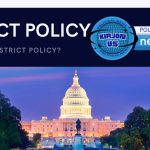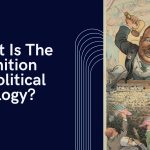Policies play a pivotal role in shaping various aspects of our lives, be it personal or professional. From governmental regulations to organizational guidelines, policies provide a framework for decision-making and behavior. In this article, we delve into the names and descriptions of three essential policies, their significance, and their impact on individuals and society.
Policy One of The Privacy Policy

In today’s interconnected world, where information flows freely across digital channels, protecting personal privacy has become paramount. The Privacy Policy, often overlooked but critically important, serves as a safeguard for individuals entrusting their data to various entities, whether it be a website, app, or organization.
What Does the Privacy Policy Entail?
At its core, the Privacy Policy delineates how an entity collects, uses, stores, and protects the personal information of its users or customers. This information may encompass a wide array of data, ranging from basic identifiers like names and email addresses to more sensitive details such as financial information or browsing history.
Key Features and Benefits
- Transparency: The Privacy Policy ensures transparency by outlining the purpose for which data is collected and how it will be utilized. This transparency fosters trust between the organization and its users.
- User Control: It empowers users with control over their data by providing options for consent, access, and modification of personal information. This control enhances user autonomy and privacy rights.
- Security Measures: The policy delineates the security measures implemented to safeguard against unauthorized access, breaches, or misuse of data. This commitment to security reassures users of their data’s protection.
- Legal Compliance: Compliance with privacy laws and regulations is a cornerstone of the Privacy Policy. By adhering to legal requirements, organizations mitigate risks associated with non-compliance, such as fines or legal repercussions.
Impact on Individuals and Organizations
For individuals, understanding and agreeing to a Privacy Policy ensure informed consent regarding the handling of their personal information. It grants them peace of mind knowing that their data is being treated responsibly and ethically.
On the organizational front, a robust Privacy Policy not only instills confidence in customers but also mitigates risks associated with data breaches or regulatory penalties. Furthermore, it demonstrates a commitment to ethical business practices, which can enhance the organization’s reputation and brand trustworthiness.
In conclusion, the Privacy Policy stands as a cornerstone of digital trust and accountability. By embracing transparency, empowering user control, implementing robust security measures, and ensuring legal compliance, organizations can navigate the intricate landscape of data privacy while fostering trust and confidence among their users.
Policy two The Return and Refund Policy
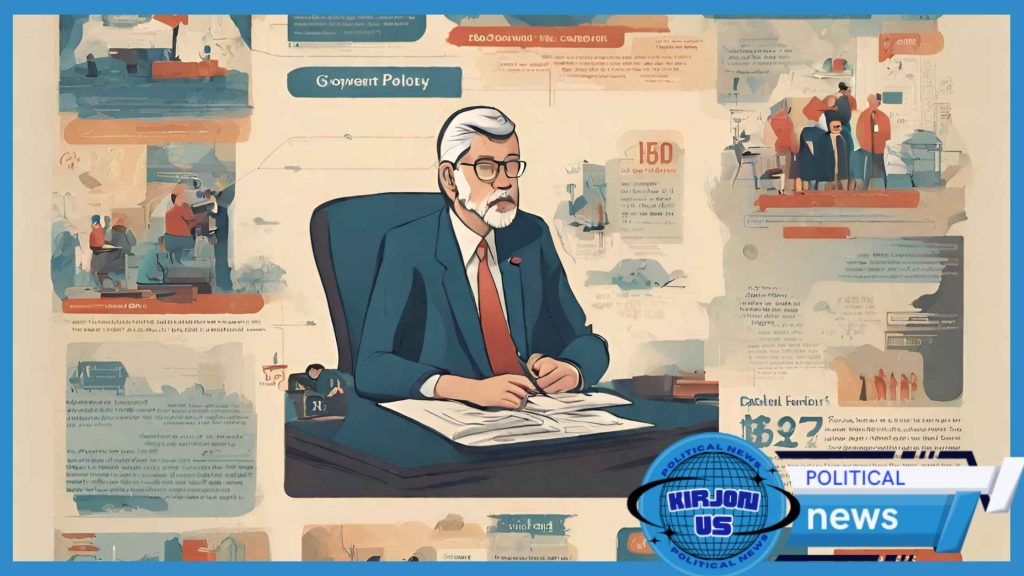
In the realm of commerce, customer satisfaction is paramount. The Return and Refund Policy, also known as the Return Policy, serves as a guide for customers and businesses alike regarding the process of returning purchased items and obtaining refunds.
Understanding the Return and Refund Policy
The Return and Refund Policy outlines the terms and conditions under which customers can return products they have purchased and receive refunds or exchanges. This policy varies widely among retailers and businesses, with each establishment setting its own rules and procedures.
Key Features and Benefits
- Return Eligibility: The policy specifies the eligibility criteria for returns, such as the timeframe within which returns are accepted, condition requirements for returned items, and any exceptions or exclusions.
- Refund Process: It delineates the process for initiating refunds, including the method of refund (e.g., store credit, original payment method), timeline for processing refunds, and any applicable restocking fees or deductions.
- Exchange Options: Some Return and Refund Policies may offer exchange options in lieu of refunds, allowing customers to swap their purchased items for alternative products of equal or lesser value.
- Customer Rights: By outlining the rights and responsibilities of both customers and businesses regarding returns and refunds, the policy ensures fairness and transparency in the transactional process.
Importance for Customers and Businesses
For customers, the Return and Refund Policy provide assurance and peace of mind when making purchases, knowing that they have recourse in case of dissatisfaction or unforeseen circumstances. It also facilitates trust and loyalty towards the business, as transparent and flexible return policies are often viewed favorably by consumers.
From a business perspective, a well-defined Return and Refund Policy can mitigate potential disputes and customer dissatisfaction by establishing clear expectations and procedures. It also fosters customer satisfaction and loyalty, as positive experiences with returns and refunds can enhance brand reputation and encourage repeat business.
In essence, the Return and Refund Policy serves as a bridge between customer expectations and business operations, ensuring a fair and transparent process for resolving transactional issues while promoting trust and satisfaction on both sides of the equation.
Policy Three The Environmental Sustainability Policy
In an era marked by growing environmental awareness and concern, organizations are increasingly recognizing the importance of adopting sustainable practices. The Environmental Sustainability Policy articulates an organization’s commitment to minimizing its environmental impact and promoting eco-friendly operations.
Understanding Environmental Sustainability Policy
The Environmental Sustainability Policy outlines the principles, goals, and strategies that an organization pledges to uphold in its pursuit of environmental stewardship. It encompasses a wide range of initiatives aimed at reducing carbon emissions, conserving resources, and promoting biodiversity.
Key Features and Benefits
- Emission Reduction Targets: The policy may set targets for reducing greenhouse gas emissions through measures such as energy efficiency improvements, adoption of renewable energy sources, and carbon offsetting initiatives.
- Resource Conservation Efforts: It may include strategies for minimizing resource consumption and waste generation, such as recycling programs, water conservation measures, and sustainable sourcing practices.
- Biodiversity Preservation: Organizations may commit to protecting and preserving biodiversity by avoiding habitat destruction, supporting conservation efforts, and mitigating the impact of their operations on ecosystems.
- Stakeholder Engagement: The policy may emphasize the importance of engaging stakeholders, including employees, suppliers, and communities, in sustainability initiatives through education, collaboration, and outreach efforts.
Importance for Organizations and Society
For organizations, embracing environmental sustainability is not only a moral imperative but also a strategic advantage. By reducing their environmental footprint, businesses can lower operational costs, enhance their reputation, and mitigate risks associated with environmental regulations and climate change.
From a societal perspective, the Environmental Sustainability Policy contributes to the collective effort to address pressing environmental challenges such as climate change, pollution, and habitat loss. By promoting sustainable practices, organizations play a vital role in safeguarding the planet for future generations and fostering a more resilient and equitable society.
In conclusion, the Environmental Sustainability Policy represents a commitment to responsible stewardship of the planet and its resources. By setting ambitious goals, implementing sustainable practices, and engaging stakeholders, organizations can contribute to building a more sustainable and prosperous future for all.
Importance of Understanding Policies
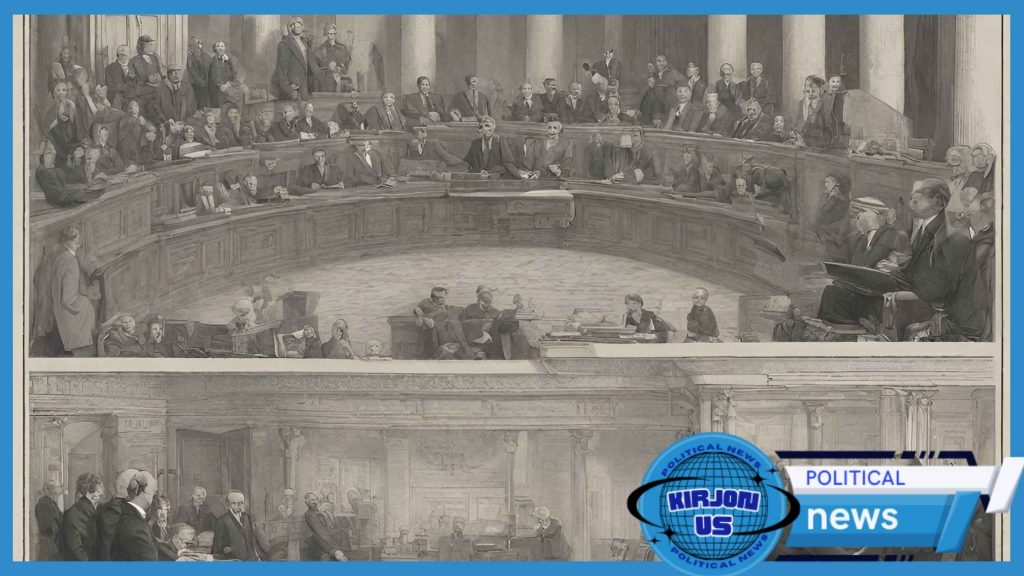
Policies serve as the backbone of governance, guiding decision-making and behavior in various contexts, from governmental regulations to organizational protocols. Understanding policies is paramount for individuals and entities alike, as it enables them to navigate complex landscapes, make informed choices, and ensure compliance with applicable rules and regulations.
Clarity and Compliance
One of the primary reasons for understanding policies is to ensure clarity and compliance. Policies outline expectations, standards, and procedures, providing a clear roadmap for actions and behaviors. Whether it’s an organization’s code of conduct or a government’s regulatory framework, comprehending policies helps individuals and entities adhere to established guidelines and avoid potential pitfalls or penalties associated with non-compliance.
Risk Management
Understanding policies is essential for effective risk management. By familiarizing themselves with relevant policies, individuals and organizations can identify potential risks, anticipate consequences, and implement appropriate mitigation strategies. Whether it’s mitigating financial risks through adherence to investment policies or addressing cybersecurity risks through compliance with data protection regulations, a thorough understanding of policies enables proactive risk management.
Decision-Making
Policies serve as valuable decision-making tools, providing a framework for evaluating options and making informed choices. Whether it’s a business decision guided by organizational policies or a policy decision informed by legislative frameworks, understanding policies equips individuals with the knowledge and insights needed to make sound decisions that align with overarching objectives and values.
Accountability and Transparency
Understanding policies fosters accountability and transparency within organizations and societies. Policies establish standards of behavior and performance, holding individuals and entities accountable for their actions and decisions. Moreover, adherence to policies promotes transparency by ensuring that processes and outcomes are consistent, predictable, and subject to scrutiny.
Protection of Rights and Interests
Policies play a crucial role in protecting rights and interests, whether it’s safeguarding individual liberties through constitutional policies or protecting consumers’ rights through consumer protection policies. By understanding their rights and entitlements under various policies, individuals can advocate for their interests, seek recourse in case of grievances, and uphold principles of justice and fairness.
In conclusion, understanding policies is essential for individuals and entities across various domains. Whether it’s ensuring compliance, managing risks, making informed decisions, fostering accountability and transparency, or protecting rights and interests, policies shape our interactions, behaviors, and outcomes. By embracing a proactive approach to understanding and engaging with policies, individuals and organizations can navigate complexities, uphold standards, and contribute to the well-being of society as a whole.
Examples of Policies in Different Sectors
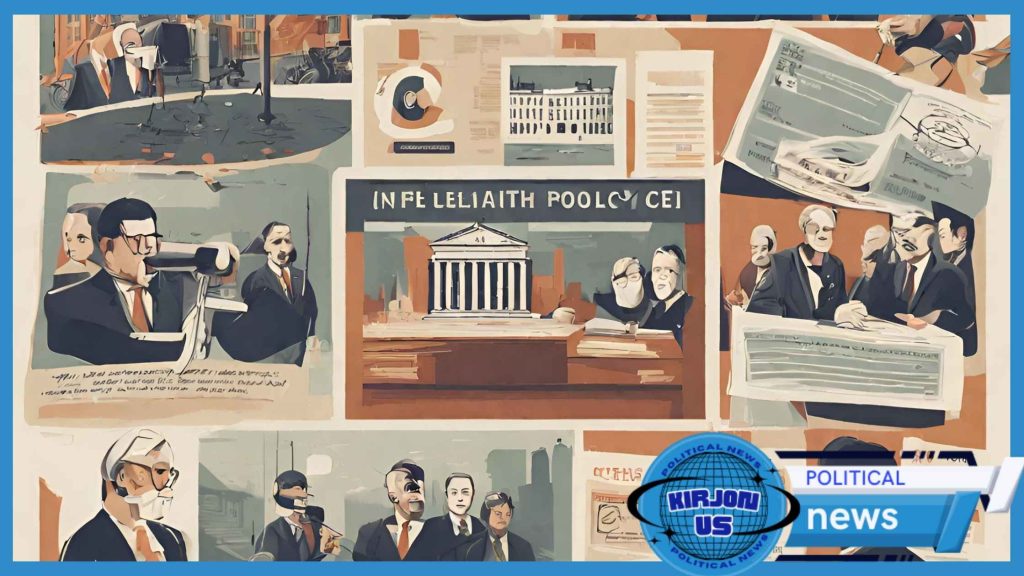
Policies are ubiquitous across various sectors, governing operations, interactions, and behaviors to ensure efficiency, fairness, and compliance with regulations. Here are examples of policies in different sectors that illustrate their diverse applications and significance.
Healthcare Sector
- Patient Confidentiality Policy: Ensures the confidentiality and privacy of patient medical information in accordance with healthcare regulations such as the Health Insurance Portability and Accountability Act (HIPAA).
- Infection Control Policy: Establishes protocols and procedures for preventing and controlling infections within healthcare facilities to safeguard patient and staff health.
- Medication Management Policy: Sets guidelines for the safe and effective management, dispensing, and administration of medications to patients, minimizing risks associated with medication errors.
Finance Sector
- Anti-Money Laundering (AML) Policy: Implements measures to prevent money laundering and terrorist financing activities, including customer due diligence, transaction monitoring, and reporting suspicious activities.
- Risk Management Policy: Defines strategies and protocols for identifying, assessing, and mitigating risks inherent in financial operations, ensuring sound financial decision-making and regulatory compliance.
- Customer Complaint Resolution Policy: Outlines procedures for addressing and resolving customer complaints in a timely and fair manner, enhancing customer satisfaction and regulatory compliance.
Education Sector
- Academic Integrity Policy: Establishes standards and consequences for maintaining academic honesty and integrity among students, faculty, and staff, ensuring fairness and credibility in educational assessments and activities.
- Student Code of Conduct Policy: Sets expectations for student behavior and disciplinary measures for violations, fostering a safe and respectful learning environment conducive to academic achievement and personal development.
- Admissions Policy: Defines criteria and procedures for admitting students to educational programs or institutions, promoting transparency, equity, and diversity in the admissions process.
Corporate Sector
- Equal Employment Opportunity (EEO) Policy: Ensures equal employment opportunities for all individuals regardless of race, gender, age, or other protected characteristics, fostering diversity, inclusion, and compliance with anti-discrimination laws.
- Workplace Safety Policy: Establishes protocols and practices to promote a safe and healthy work environment, minimizing occupational hazards and ensuring compliance with occupational health and safety regulations.
- Data Security and Privacy Policy: Sets guidelines for protecting sensitive corporate data and ensuring compliance with data protection laws, safeguarding against data breaches and unauthorized access or disclosure.
Government Sector
- Fiscal Policy: Governs government spending, taxation, and borrowing to achieve economic objectives such as price stability, full employment, and sustainable economic growth.
- Environmental Policy: Guides government actions and regulations aimed at addressing environmental challenges such as pollution, climate change, and habitat destruction, promoting sustainability and conservation efforts.
- National Security Policy: Defines strategies and measures for safeguarding a nation’s security interests, including defense, intelligence, and counterterrorism efforts, ensuring the protection of citizens and sovereignty.
These examples highlight the diverse array of policies implemented across different sectors to regulate conduct, manage risks, and achieve objectives. Policies play a vital role in shaping organizational cultures, fostering compliance with regulations, and promoting the well-being of stakeholders. Understanding and adhering to relevant policies are essential for individuals and entities to navigate complex environments, uphold standards, and contribute to positive outcomes in their respective sectors.
Impact of Policies on Society
Policies, whether enacted by governments, institutions, or organizations, exert a profound influence on society, shaping behaviors, opportunities, and outcomes. From economic prosperity to social justice, policies play a pivotal role in determining the trajectory of societies. Here, we explore the multifaceted impact of policies on various aspects of societal well-being.
Economic Implications
- Stimulating Economic Growth: Fiscal and monetary policies implemented by governments can influence economic growth rates by regulating spending, taxation, interest rates, and money supply. Policies that encourage investment, innovation, and entrepreneurship can foster economic expansion and job creation.
- Reducing Inequality: Social welfare policies such as progressive taxation, income redistribution, and social safety nets aim to mitigate income inequality by providing assistance to disadvantaged individuals and families. By promoting equitable access to resources and opportunities, these policies contribute to social cohesion and stability.
- Ensuring Financial Stability: Regulatory policies in the finance sector, such as banking regulations and consumer protection laws, play a crucial role in maintaining financial stability and mitigating systemic risks. Effective oversight and regulation help prevent financial crises and protect consumers from predatory practices.
Social Implications
- Promoting Social Justice: Policies addressing issues such as civil rights, gender equality, and racial discrimination are instrumental in promoting social justice and equality of opportunity. Anti-discrimination laws, affirmative action policies, and diversity initiatives aim to dismantle barriers and ensure fair treatment for all members of society.
- Protecting Public Health: Public health policies, including vaccination mandates, smoking bans, and food safety regulations, are essential for safeguarding the health and well-being of populations. By promoting disease prevention, ensuring access to healthcare services, and regulating harmful substances, these policies contribute to improved health outcomes and quality of life.
- Fostering Education and Lifelong Learning: Educational policies shape the accessibility, quality, and affordability of educational opportunities for individuals of all ages. Investments in education, curriculum standards, and student support services contribute to the development of human capital, economic productivity, and social mobility.
Environmental Implications
- Mitigating Climate Change: Environmental policies aimed at reducing greenhouse gas emissions, promoting renewable energy, and conserving natural resources play a critical role in addressing climate change and environmental degradation. International agreements such as the Paris Agreement set targets and guidelines for collective action to combat climate change.
- Preserving Biodiversity: Conservation policies and protected areas help preserve biodiversity and ecosystem integrity, safeguarding endangered species and habitats. By promoting sustainable land use, habitat restoration, and wildlife conservation efforts, these policies contribute to the long-term health of ecosystems and the services they provide.
- Adapting to Environmental Risks: Climate adaptation policies focus on building resilience to environmental risks such as extreme weather events, sea-level rise, and ecosystem disruptions. Strategies may include infrastructure upgrades, disaster preparedness planning, and community resilience initiatives to mitigate the impacts of climate-related hazards.
The impact of policies on society is profound and far-reaching, influencing economic prosperity, social equity, and environmental sustainability. Effective policies reflect societal values, address pressing challenges, and strive to create inclusive and sustainable futures for current and future generations. By understanding the implications of policies and actively participating in policy development and implementation processes, individuals can contribute to shaping a more just, prosperous, and resilient society.
Common Misconceptions about Policies
Policies, while essential for governing various aspects of society, are often subject to misconceptions and misunderstandings. These misconceptions can lead to confusion, misinterpretation, and ineffective implementation of policies. Here, we debunk some common misconceptions about policies to promote clarity and understanding.
Misconception 1: Policies Are One-Size-Fits-All Solutions
Reality: While policies provide guidelines and standards, they are not universally applicable solutions to every situation. Policies should be flexible and adaptable to accommodate diverse contexts, needs, and circumstances. A one-size-fits-all approach can overlook unique challenges and opportunities, leading to ineffective outcomes.
Misconception 2: Policies Are Static and Immutable
Reality: Policies are not set in stone; they evolve in response to changing conditions, priorities, and stakeholder feedback. Revisions, amendments, and updates to policies are often necessary to reflect emerging trends, new evidence, and evolving societal norms. Flexibility and responsiveness are essential attributes of effective policy frameworks.
Misconception 3: Compliance with Policies Guarantees Success
Reality: While compliance with policies is important, it does not guarantee success or optimal outcomes. Merely adhering to the letter of the policy without considering its spirit or intent may lead to unintended consequences or missed opportunities. Critical thinking, creativity, and ethical judgment are essential for interpreting and applying policies effectively.
Misconception 4: Policies Solve Problems Overnight
Reality: Policies are tools for addressing complex issues and challenges, but they rarely yield immediate results. Achieving meaningful outcomes often requires sustained effort, collaboration, and resource allocation over time. Policies may lay the groundwork for change, but implementation and enforcement are key to realizing desired impacts.
Misconception 5: Policies Are Always Enforced Consistently
Reality: While consistency in policy enforcement is desirable, practical constraints, discretion, and competing priorities may lead to variations in implementation. Factors such as resource availability, organizational culture, and stakeholder dynamics can influence the enforcement of policies. Efforts to promote fairness, transparency, and accountability can help mitigate inconsistencies.
Misconception 6: Policies Are Always Rational and Evidence-Based
Reality: While policies ideally should be informed by evidence and rational analysis, political considerations, ideological beliefs, and stakeholder interests may also influence policy decisions. Emotions, values, and power dynamics often play a role in shaping policy agendas and outcomes. Balancing competing interests and perspectives is integral to effective policy-making.
Misconception 7: Policies Are Only Relevant to Governments and Large Organizations
Reality: Policies are relevant to entities of all sizes and sectors, including governments, businesses, nonprofits, and community groups. From organizational protocols to local ordinances, policies govern a wide range of activities and interactions. Understanding and complying with relevant policies are essential for individuals and entities to operate ethically and responsibly.
Dispelling misconceptions about policies is crucial for fostering informed decision-making, promoting transparency, and enhancing accountability. Recognizing the nuanced nature of policies, their dynamic nature, and their multifaceted impacts can empower individuals and entities to engage meaningfully in policy discussions, implementation, and evaluation. By debunking common myths and misconceptions, we can foster a more nuanced understanding of policies and their role in shaping society.
How Policies Are Formulated
The formulation of policies is a complex and iterative process that involves multiple stakeholders, considerations, and steps. From identifying issues and setting objectives to drafting, implementing, and evaluating policies, each stage plays a crucial role in shaping policy outcomes. Here, we explore the key elements and stages involved in the formulation of policies.
Identifying Issues and Setting Objectives
- Issue Identification: The first step in policy formulation is identifying pressing issues, challenges, or opportunities that warrant attention and intervention. This may involve conducting research, analyzing data, consulting stakeholders, and assessing public opinion to identify areas of concern.
- Objective Setting: Once issues are identified, policymakers establish clear objectives and goals that the policy aims to achieve. Objectives should be specific, measurable, achievable, relevant, and time-bound (SMART), providing a roadmap for policy development and evaluation.
Policy Analysis and Development
- Policy Research and Analysis: Policymakers conduct in-depth research and analysis to understand the root causes of the identified issues, assess potential policy options, and evaluate their feasibility, effectiveness, and implications. This may involve literature reviews, case studies, cost-benefit analysis, and stakeholder consultations.
- Policy Formulation: Based on the findings of policy analysis, policymakers develop policy proposals and recommendations that address the identified issues and align with the established objectives. This may involve drafting policy documents, legislative proposals, or regulatory frameworks outlining the scope, provisions, and implementation strategies of the proposed policies.
Consultation and Stakeholder Engagement
- Stakeholder Consultation: Policymakers engage with a diverse range of stakeholders, including government agencies, industry representatives, advocacy groups, community organizations, and affected individuals, to solicit input, feedback, and perspectives on proposed policies. This collaborative approach ensures that policies are informed by a variety of viewpoints and consider the needs and interests of key stakeholders.
- Public Participation: In addition to stakeholder consultations, policymakers may seek input from the broader public through public hearings, town hall meetings, surveys, and online platforms. Public participation enhances transparency, legitimacy, and accountability in the policy-making process, empowering citizens to contribute to decision-making and shape policy outcomes.
Decision-Making and Implementation
- Policy Adoption: Following consultation and deliberation, policymakers make decisions regarding the adoption of specific policy options. This may involve legislative processes, executive orders, administrative rulemaking, or other formal mechanisms for enacting policies into law or practice.
- Policy Implementation: Once policies are adopted, they are translated into actionable initiatives, programs, or regulations that guide behaviors, allocate resources, and achieve desired outcomes. Implementation involves coordinating activities, allocating resources, building capacity, and monitoring progress to ensure effective execution of policy objectives.
Evaluation and Review
- Policy Evaluation: Periodic evaluation and review of policies are essential to assess their impact, effectiveness, and relevance over time. Evaluation involves collecting and analyzing data, measuring outcomes against objectives, identifying strengths and weaknesses, and making adjustments or improvements as needed.
- Policy Revision: Based on the findings of policy evaluation, policymakers may revise, amend, or update existing policies to address emerging issues, address shortcomings, or capitalize on opportunities for improvement. Policy revision ensures that policies remain responsive to changing needs, priorities, and circumstances.
The formulation of policies is a dynamic and multifaceted process that requires careful analysis, consultation, decision-making, and evaluation. By following systematic approaches to identify issues, set objectives, engage stakeholders, make decisions, and evaluate outcomes, policymakers can develop effective policies that address pressing challenges, promote societal well-being, and advance public interests. Understanding the intricacies of policy formulation is essential for informed citizenship, effective governance, and positive social change.
Conclusion
Policies serve as guiding principles and frameworks for decision-making, governance, and behavior across various sectors and contexts. From healthcare regulations to environmental protections, policies play a pivotal role in shaping societal norms, addressing challenges, and promoting collective well-being. Understanding the formulation, implementation, and impacts of policies is essential for informed citizenship, effective governance, and positive social change.
As individuals and entities navigate complex policy landscapes, it is crucial to critically evaluate policies, engage in constructive dialogue, and advocate for policies that promote fairness, equity, and sustainability. By actively participating in policy processes, fostering transparency, and holding decision-makers accountable, we can contribute to the development of policies that reflect the diverse needs, values, and aspirations of society.
FAQs (Frequently Asked Questions)
1. Why are policies important?
Policies are important because they provide guidelines, standards, and regulations that govern various aspects of society, including governance, commerce, healthcare, education, and the environment. They promote fairness, transparency, and accountability, shape behaviors and decision-making, and address pressing challenges and opportunities.
2. How are policies formulated?
Policy formulation involves identifying issues, setting objectives, conducting research and analysis, engaging stakeholders, making decisions, and evaluating outcomes. It is a collaborative and iterative process that requires input from diverse stakeholders, consideration of evidence and perspectives, and responsiveness to changing needs and circumstances.
3. What is the role of stakeholders in policy formulation?
Stakeholders play a crucial role in policy formulation by providing input, feedback, and expertise on proposed policies. They represent diverse interests, perspectives, and expertise, ensuring that policies reflect the needs and priorities of affected individuals and communities. Stakeholder engagement promotes transparency, legitimacy, and accountability in the policy-making process.
4. How do policies impact society?
Policies impact society in diverse ways, influencing economic prosperity, social equity, environmental sustainability, and public health. They shape behaviors, opportunities, and outcomes, guiding decision-making and resource allocation. Effective policies contribute to the well-being of individuals and communities by promoting fairness, justice, and the common good.
5. Can policies be revised or amended?
Yes, policies can be revised, amended, or updated in response to changing needs, priorities, and circumstances. Policy revision may involve evaluating outcomes, soliciting feedback from stakeholders, and making adjustments to address shortcomings or capitalize on opportunities for improvement. Flexibility and adaptability are essential attributes of effective policy frameworks.


